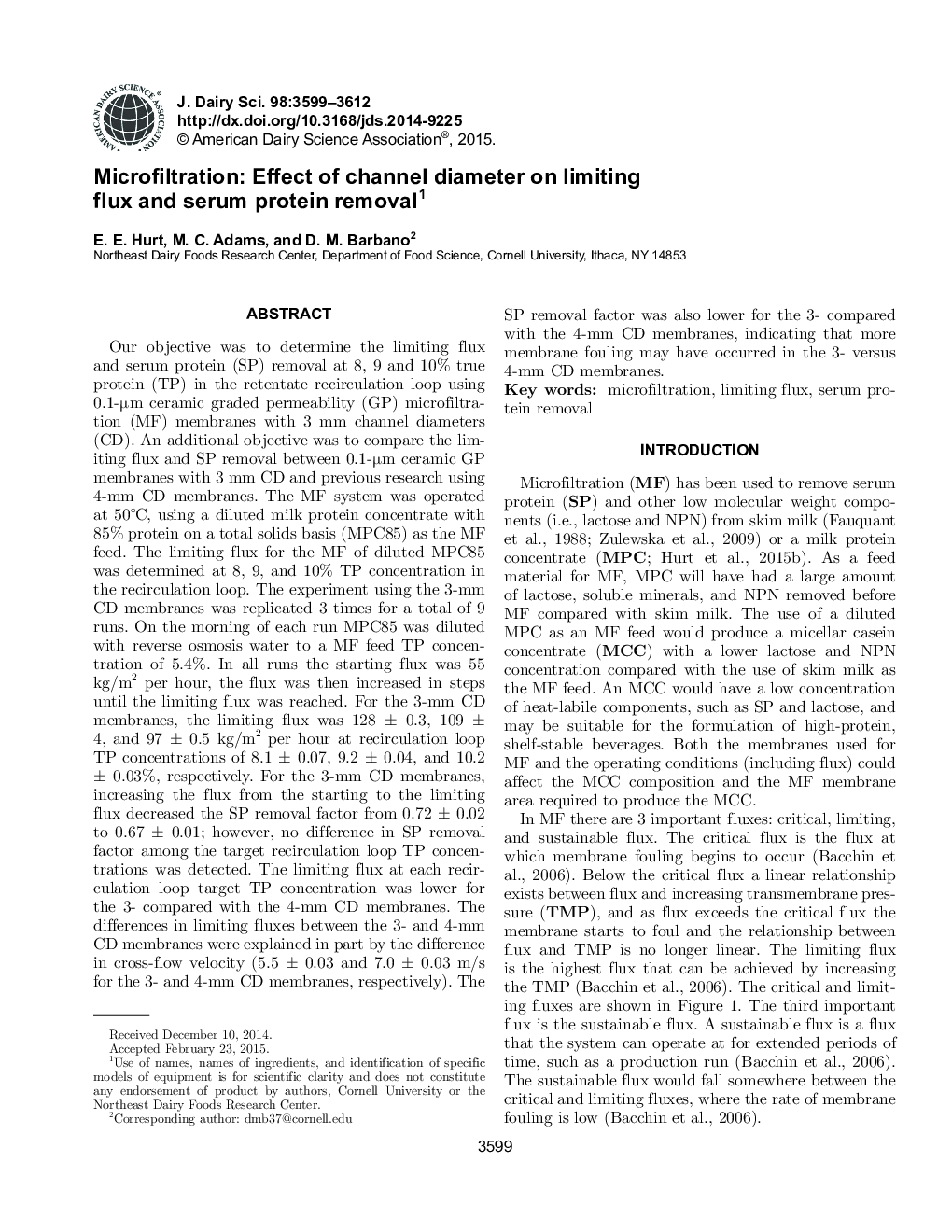| Article ID | Journal | Published Year | Pages | File Type |
|---|---|---|---|---|
| 10975735 | Journal of Dairy Science | 2015 | 14 Pages |
Abstract
Our objective was to determine the limiting flux and serum protein (SP) removal at 8, 9 and 10% true protein (TP) in the retentate recirculation loop using 0.1-µm ceramic graded permeability (GP) microfiltration (MF) membranes with 3 mm channel diameters (CD). An additional objective was to compare the limiting flux and SP removal between 0.1-µm ceramic GP membranes with 3 mm CD and previous research using 4-mm CD membranes. The MF system was operated at 50°C, using a diluted milk protein concentrate with 85% protein on a total solids basis (MPC85) as the MF feed. The limiting flux for the MF of diluted MPC85 was determined at 8, 9, and 10% TP concentration in the recirculation loop. The experiment using the 3-mm CD membranes was replicated 3 times for a total of 9 runs. On the morning of each run MPC85 was diluted with reverse osmosis water to a MF feed TP concentration of 5.4%. In all runs the starting flux was 55 kg/m2 per hour, the flux was then increased in steps until the limiting flux was reached. For the 3-mm CD membranes, the limiting flux was 128 ± 0.3, 109 ± 4, and 97 ± 0.5 kg/m2 per hour at recirculation loop TP concentrations of 8.1 ± 0.07, 9.2 ± 0.04, and 10.2 ± 0.03%, respectively. For the 3-mm CD membranes, increasing the flux from the starting to the limiting flux decreased the SP removal factor from 0.72 ± 0.02 to 0.67 ± 0.01; however, no difference in SP removal factor among the target recirculation loop TP concentrations was detected. The limiting flux at each recirculation loop target TP concentration was lower for the 3- compared with the 4-mm CD membranes. The differences in limiting fluxes between the 3- and 4-mm CD membranes were explained in part by the difference in cross-flow velocity (5.5 ± 0.03 and 7.0 ± 0.03 m/s for the 3- and 4-mm CD membranes, respectively). The SP removal factor was also lower for the 3- compared with the 4-mm CD membranes, indicating that more membrane fouling may have occurred in the 3- versus 4-mm CD membranes.
Keywords
Related Topics
Life Sciences
Agricultural and Biological Sciences
Animal Science and Zoology
Authors
E.E. Hurt, M.C. Adams, D.M. Barbano,
